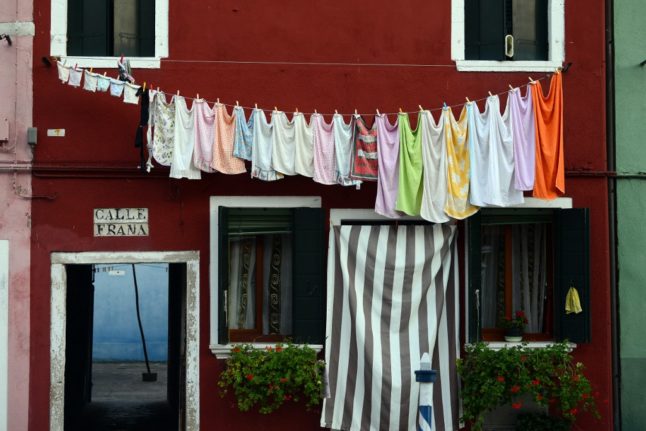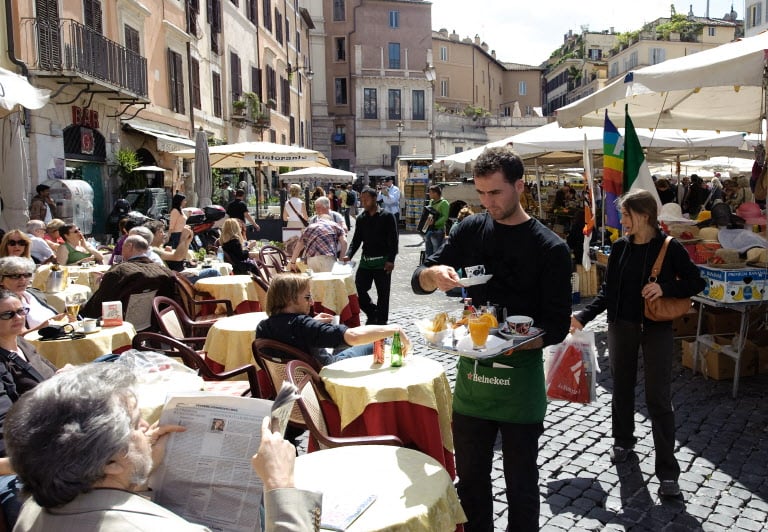Under Italian law, anyone who plans to stay permanently should register as a resident within three months of moving here. (If you haven’t done it yet, find a guide here.)
That involves informing your municipality of your official address in Italy, and if you move, you’ll need to let them know.
READ ALSO: What’s the difference between Italian residency and citizenship?
Thankfully, changing your registered residence within Italy isn’t too complicated – and you may even be able to do it online.
Here’s how the process works.
Why do you have to register a change of address?
Where you’re registered as living determines where you can access various services in Italy. Notably, if you sign up for national healthcare you’ll be assigned to the local health authority nearest your address and registered with a GP in the same district.
You’ll also have to deal with whichever civil registry office, tax office, department of motor vehicles – and so on and so on – is closest to your official residence.
So registering your new address makes the biggest difference if you’re moving from one municipality or region to another, but even if you’re moving within the same city, it can still save you a trip across town.
You might not be allowed to park your car for free or drive in certain areas unless you’re a registered resident of your town. And there are also tax implications depending on what kind of property you’re registered as living in, and with whom.
Not to mention that, especially if you’re a foreign national in Italy dealing with immigration procedures, you’ll want to be sure that all your paperwork is in order and official correspondence goes to the correct address.
How do you change your registered address in Italy?
First, the good news: if you’ve already been through the process of transferring your residency to Italy from overseas, it gets a lot easier from here on out. You won’t have to prove you have the means to support yourself or access to healthcare all over again.
Instead, you just need to show that you really do live at your new address.
That involves registering with the anagrafe (civil registry office) of the comune (municipality) you’re moving to.
What documents do you need?
You’ll have to fill in a declaration of residency (‘dichiarazione di residenza‘), which you should be able to find on your comune‘s website.
It may be the same form as the one you filled in the first time you registered your residency in Italy, but this time you’ll tick the option ‘Dichiarazione di residenza con provenienza da altro comune‘ (“transfer of residency from a different municipality”) or ‘Dichiarazione di cambiamento di abitazione nell’ambito dello stesso comune‘ (“change of address within the same municipality”).
As proof of address you’ll need one of the following:
- Deeds in your name showing you own the property.
- Tenancy agreement showing you’re renting the property.
- Written consent from the owner stating that you have their permission to live there, signed and accompanied by a copy of their ID (search for ‘dichiarazione di consenso del proprietario dell’immobile‘ to find an example).
On top of that, you’ll need these documents to prove your identity:
- For EU nationals: passport or Italian ID card.
- For non-EU nationals: passport and permesso di soggiorno (residence permit).
- Certificate or card showing your codice fiscale (tax code).
If you own a vehicle, you should also show your driver’s licence and vehicle registration documents – but only if they were issued in Italy.
If you’re moving with family members, you can switch everyone’s address at the same time. Complete one application for the whole household, making sure to list each member and include copies of their ID and codice fiscale.
Or if you’re moving in with someone else already registered at your new address, they’ll need to give written consent (search for ‘atto di assenso al trasferimento di residenza‘ to see an example). You should also make a copy of their ID.
Where do you send the request?
Send your declaration form and all your supporting documents to the anagrafe in your new comune.
Many municipalities allow you to do so via email, with your documents as scanned attachments. Check your comune‘s website for the right email address (look for one specifically for residency requests, if possible).
Some municipalities even have web portals allowing you to complete the whole process online. They might require a digital ID (SPID) or electronic ID card (CIE) to register.
Alternatively, you may be able to submit your request by fax or registered post.
Amid the Covid-19 pandemic many registry offices are currently closed to the public or open by appointment only, so if you really can’t avoid going in person, call ahead or use a booking service like TuPassi to make an appointment online.
What happens next?
Your change of registered address is supposed to take effect within two working days of your anagrafe receiving the request. After this point you should be able to request a new certificate of residence showing that you have requested a change of address.
But the change isn’t officially confirmed until your documents have been verified and local police have come to your new address to check you’re living there (so make sure you put your name on the doorbell and/or mailbox).
They are supposed to do so within 45 days of your request. If you haven’t heard anything after that, you can assume that your registration has been accepted.
These timelines are subject to delays, however, especially at the moment. Municipal offices may have reduced hours and considerable backlogs after panemic-related closures, so expect bureaucratic procedures to take even longer than usual.




 Please whitelist us to continue reading.
Please whitelist us to continue reading.
Member comments